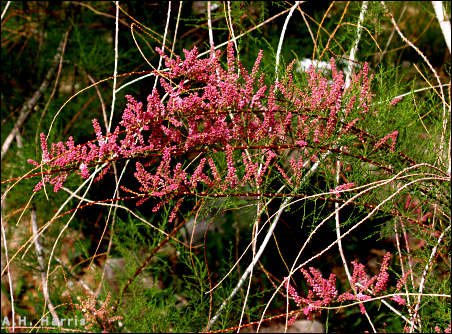

Somehow it's a shame that harmful things often appear under the guise of beauty. Life would be a lot simpler if evil were always ugly. Of course when it comes to nature, the concept of evil really doesn't fit if the definition of evil is deemed to include intent. In fact, many harmful things turn out to be dangerous only because they—or we—are out of place. For example, venomous snakes often are things of beauty, but only harmful if humans or their animals are in the wrong place at the wrong time.
At times, beauty may lead us to purposefully put harmful organisms into what turns out to be the wrong place and time. Salt Cedar is a tremendously harmful plant along our desert waterways, yet viewed dispassionately, is a thing of beauty with its fine, ferny foliage and light pink sprays of flowers. It was this beauty that led to its introduction into the New World where it has commandeered much of the riverside flood plain, driving out native vegetation and pouring our all-precious water into the atmosphere.

Contributor: Arthur H. Harris, Laboratory for Environmental Biology, Centennial Museum, University of Texas at El Paso.
Desert Diary is a joint production of the Centennial Museum and KTEP National Public Radio at the University of Texas at El Paso.

Flowers of Salt Cedar (Tamarisk) growing along the UTEP campus arroyo; foliage in the background. Photograph by A.H. Harris.